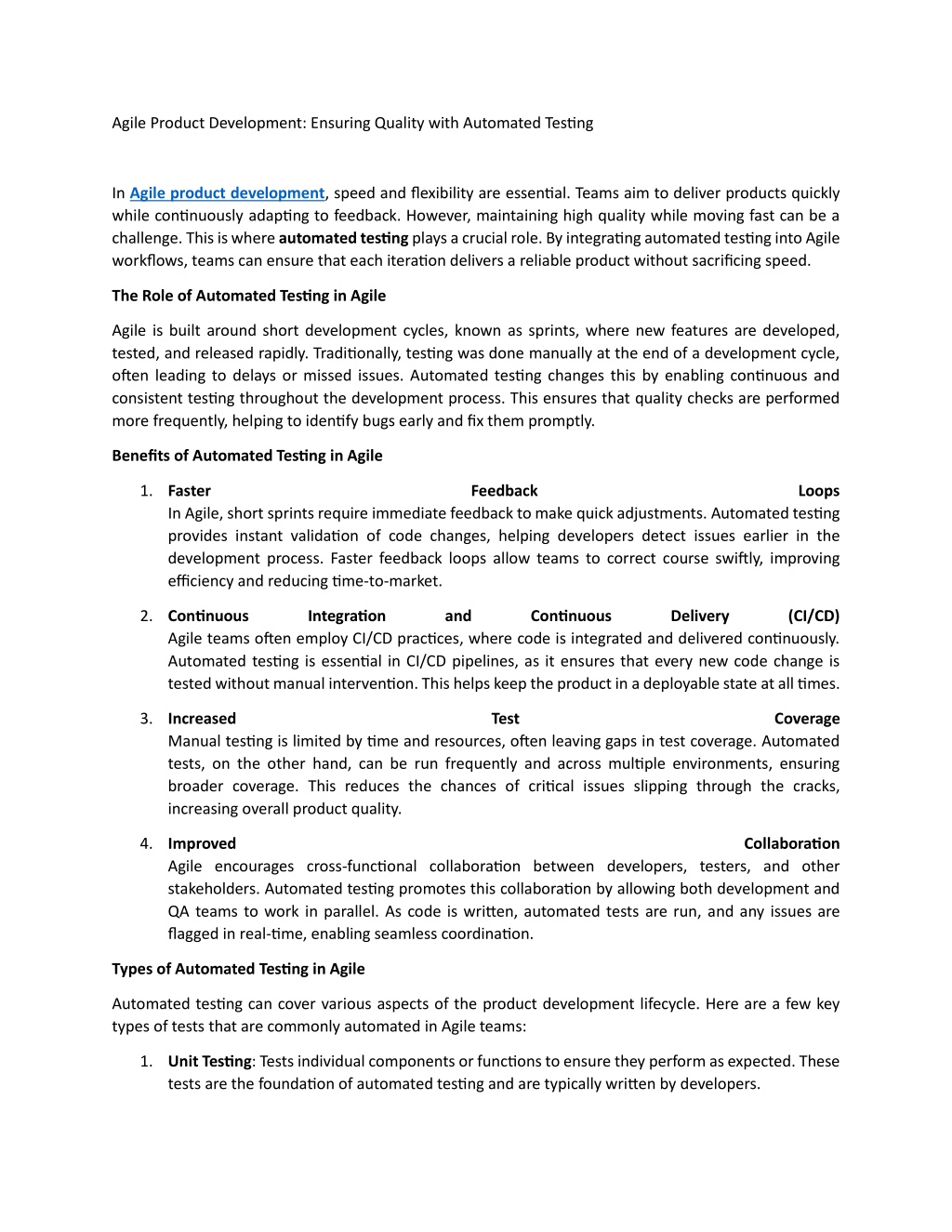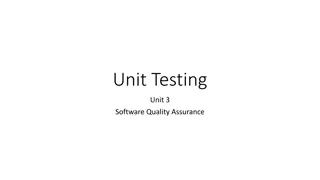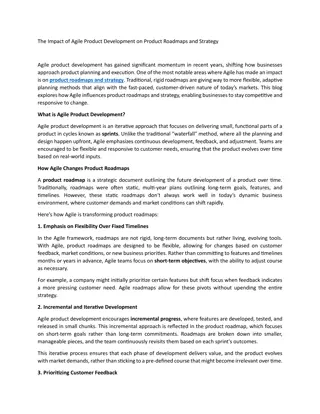
Agile Product Development Ensuring Quality with Automated Testing
Agile is built around short development cycles, known as sprints, where new features are developed, tested, and released rapidly.
Download Presentation

Please find below an Image/Link to download the presentation.
The content on the website is provided AS IS for your information and personal use only. It may not be sold, licensed, or shared on other websites without obtaining consent from the author. Download presentation by click this link. If you encounter any issues during the download, it is possible that the publisher has removed the file from their server.
E N D
Presentation Transcript
Agile Product Development: Ensuring Quality with Automated Testing In Agile product development, speed and flexibility are essential. Teams aim to deliver products quickly while continuously adapting to feedback. However, maintaining high quality while moving fast can be a challenge. This is where automated testing plays a crucial role. By integrating automated testing into Agile workflows, teams can ensure that each iteration delivers a reliable product without sacrificing speed. The Role of Automated Testing in Agile Agile is built around short development cycles, known as sprints, where new features are developed, tested, and released rapidly. Traditionally, testing was done manually at the end of a development cycle, often leading to delays or missed issues. Automated testing changes this by enabling continuous and consistent testing throughout the development process. This ensures that quality checks are performed more frequently, helping to identify bugs early and fix them promptly. Benefits of Automated Testing in Agile 1.Faster In Agile, short sprints require immediate feedback to make quick adjustments. Automated testing provides instant validation of code changes, helping developers detect issues earlier in the development process. Faster feedback loops allow teams to correct course swiftly, improving efficiency and reducing time-to-market. Feedback Loops 2.Continuous Agile teams often employ CI/CD practices, where code is integrated and delivered continuously. Automated testing is essential in CI/CD pipelines, as it ensures that every new code change is tested without manual intervention. This helps keep the product in a deployable state at all times. Integration and Continuous Delivery (CI/CD) 3.Increased Manual testing is limited by time and resources, often leaving gaps in test coverage. Automated tests, on the other hand, can be run frequently and across multiple environments, ensuring broader coverage. This reduces the chances of critical issues slipping through the cracks, increasing overall product quality. Test Coverage 4.Improved Agile encourages cross-functional collaboration between developers, testers, and other stakeholders. Automated testing promotes this collaboration by allowing both development and QA teams to work in parallel. As code is written, automated tests are run, and any issues are flagged in real-time, enabling seamless coordination. Collaboration Types of Automated Testing in Agile Automated testing can cover various aspects of the product development lifecycle. Here are a few key types of tests that are commonly automated in Agile teams: 1.Unit Testing: Tests individual components or functions to ensure they perform as expected. These tests are the foundation of automated testing and are typically written by developers.
2.Integration Testing: Verifies that different components of the system work well together. Automated integration tests ensure that new features don t break existing functionality when integrated. 3.Functional Testing: Validates the behavior of the product against specified requirements. It focuses on user-facing features and ensures that the product functions as intended. 4.Regression Testing: Ensures that recent code changes haven t introduced new bugs in previously working functionality. Automated regression tests help Agile teams maintain quality even as the product evolves. 5.Performance Testing: Checks how the system performs under load or stress conditions. Automated performance tests can be run to ensure the product meets performance standards before release. Best Practices for Automated Testing in Agile To maximize the benefits of automated testing in Agile product development, teams should follow these best practices: 1.Automate Early and Often: Begin automating tests from the start of the project and run them throughout the development lifecycle. The earlier issues are detected, the easier they are to fix. 2.Prioritize High-Impact Areas: Focus automated testing efforts on critical areas of the product that will have the greatest impact on quality. Prioritize frequently used features and high-risk areas for automation. 3.Maintain and Update Tests Regularly: Automated tests can become outdated as the product evolves. Regularly review and update your test suite to ensure it stays relevant and continues to deliver accurate results. 4.Run Tests in Parallel: To maximize efficiency, run automated tests in parallel with development. This ensures that code is tested continuously and allows teams to identify and resolve issues in real-time. 5.Use Test Automation Tools: There are numerous tools available for automating tests, such as Selenium, JUnit, and TestNG. Choose the right tools for your project based on your tech stack and team expertise. Conclusion In Agile product development, delivering high-quality products at speed is key to success. Automated testing plays a vital role in ensuring quality by providing faster feedback, broader test coverage, and seamless integration into Agile workflows. By implementing automated tests, teams can confidently push new features, reduce errors, and enhance collaboration, all while maintaining the agility required in today s competitive market. Read ensuring.html More: https://techhorizonsolutions.blogspot.com/2024/09/agile-product-development-






















